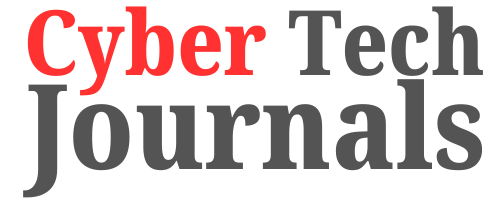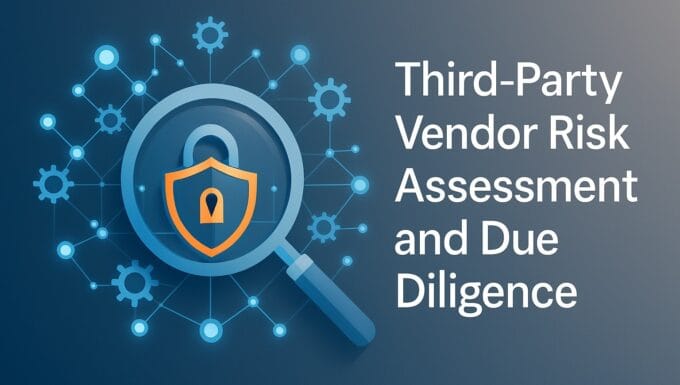Did you know the global cyber insurance market is projected to hit $40 billion by 2030 according to Allied Market Research? That’s no surprise when you consider that ransomware attacks surged by 37% in 2024 alone. In today’s digital-first world, businesses can no longer rely on firewalls and antivirus software as their only lines of defense. Hackers are faster, smarter, and powered by artificial intelligence.
That’s where cyber insurance for companies steps in—acting as a financial safety net when preventive security fails. Whether you’re a startup handling sensitive client data or a large enterprise with global operations, cyber insurance in 2025 isn’t just a smart investment—it’s essential. In this article, we’ll break down what cyber insurance covers, how to choose the right policy, and why pairing insurance with strategies like Zero Trust Architecture is the best way to secure your business with confidence.
What Is Cyber Insurance and Why Your Business Needs It
Cyber insurance is designed to protect organizations against the financial fallout of cyberattacks—ransomware, phishing, data breaches, and more. Think of it as business continuity insurance for the digital age.
- First-party protection: Covers direct losses like ransomware payments, system restoration, and lost revenue.
- Third-party liability: Handles lawsuits, compliance penalties, and damages to partners or customers.
- Crisis response: Some policies even fund PR campaigns and forensic investigations.
According to the National Association of Insurance Commissioners (NAIC), the demand for cyber insurance has skyrocketed as regulations tighten and breach costs grow. For more insights, see Cyber Tech Journals’ 2025 guide to cyber insurance.
Types of Coverage Companies Should Consider
Not all cyber policies are created equal. Understanding coverage types is key:
- First-party coverage – Protects your own losses: downtime, data recovery, and ransomware payouts.
- Third-party liability – Safeguards against claims from clients, regulators, and vendors.
- Compliance protection – Essential for industries handling sensitive data like healthcare (HIPAA) or finance (GDPR).
- Add-ons – Emerging policies include AI-powered threat monitoring and Data Loss Prevention (DLP) solutions.
Why it matters: The IBM Cost of a Data Breach Report 2024 shows the average breach cost reached $4.45 million globally—a figure that cyber insurance can help absorb.
The Cybersecurity Landscape in 2025
The threat environment has never been more complex:
- AI-driven phishing and ransomware-as-a-service are on the rise. (Cyber Tech Journals: Cyber Threats 2024)
- Zero Trust adoption is becoming a requirement from insurers.
- Regulations like India’s DPDP Act and Europe’s GDPR continue to shape risk management.
For a global perspective, check out the ENISA Threat Landscape Report.
How to Choose the Right Policy for Your Business
Selecting the right policy isn’t just about cost—it’s about fit.
- Assess your cybersecurity posture: Frameworks like ISO 27001 and NIST can help identify gaps.
- Compare policies carefully: Look beyond premiums; examine exclusions and incident response terms.
- Use AI-driven security: Solutions like AI Threat Detection Tools can lower risk (and premiums).
For benchmarking, PwC’s cyber insurance insights provide valuable market comparisons.
Internal Cybersecurity Practices That Complement Insurance
Insurance is just one piece of the puzzle. Pair it with best practices to lower risks and costs:
- Draft a formal policy using this Cybersecurity Policy Guide.
- Train staff to recognize phishing and prevent Insider Threats.
- Implement Zero Trust measures—multi-factor authentication, continuous verification, micro-segmentation.
- Adopt free tools to bolster defenses (see Top Free Cybersecurity Tools for IT Professionals).
The Cybersecurity & Infrastructure Security Agency (CISA) also provides actionable frameworks for businesses.
Future Trends in Cyber Insurance
Looking ahead, cyber insurance will become more dynamic:
- Integration with real-time monitoring: Policies linked to continuous threat feeds.
- Tailored products for AI threats: Coverage against deepfakes and generative AI misuse.
- Government mandates: Certain sectors may soon be legally required to hold coverage.
As McKinsey notes, insurers will increasingly tie premiums to ongoing risk assessments. For a detailed outlook, see Cyber Tech Journals’ future trends in cyber insurance.
FAQs
What is cyber insurance?
It’s financial protection against losses from cyber incidents like ransomware, data breaches, and business interruption.
What does it cover?
First-party losses, third-party claims, and in many cases, compliance penalties.
How much does it cost?
Premiums vary by industry, risk profile, and security posture. Strong defenses can reduce costs.
Is it mandatory?
Not universally—but certain sectors (like banking or healthcare) are increasingly being pushed toward adoption.
Final Thought
In 2025, cyber insurance for companies isn’t a luxury—it’s a necessity. With threats escalating, regulations tightening, and breach costs climbing, the right insurance policy can make the difference between recovery and ruin.
But remember: insurance works best when paired with strong defenses—Zero Trust frameworks, AI-powered detection, employee training, and smart policies. By combining these strategies, you can build a resilient defense that not only protects your digital assets but also strengthens your negotiating power with insurers.
For ongoing guidance, explore resources like Cyber Tech Journals, IBM’s breach reports, and CISA’s cybersecurity tools.
Secure your business with confidence—because in the digital era, prevention plus insurance equals resilience.













Leave a comment